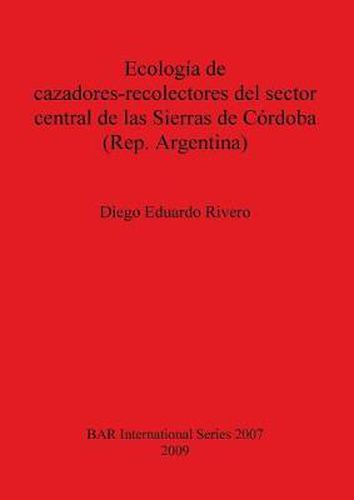Readings Newsletter
Become a Readings Member to make your shopping experience even easier.
Sign in or sign up for free!
You’re not far away from qualifying for FREE standard shipping within Australia
You’ve qualified for FREE standard shipping within Australia
The cart is loading…






This title is printed to order. This book may have been self-published. If so, we cannot guarantee the quality of the content. In the main most books will have gone through the editing process however some may not. We therefore suggest that you be aware of this before ordering this book. If in doubt check either the author or publisher’s details as we are unable to accept any returns unless they are faulty. Please contact us if you have any questions.
Modern ecological studies are unable to examine long-term processes operating on the order of hundreds of years. Because of the limited length of modern and historic records, questions about long-term interactions between people and the environment can only be answered using paleoecological and archaeological information. This volume presents prehistoric records that span over a millennium to examine issues of human paleoecology on the Columbia Plateau of Washington State, USA. Unlike many previous studies, this study (1) quantifies past human population, (2) compares relative inputs of humans, climate, fire, and vegetation using multivariate statistics, (3) examines relationships between variables when leads and lags of different lengths are introduced,and (4) identifies multicollinearity, allowing variables of no unique explanatory value to be eliminated. This study indicates that research on human impacts that focuses on bivariate patterns, such as simple comparisons of coeval human population and fire, can suffer from the problem of equifinality. The multivariate statistical procedures employed in this work avoid these problems, however, and can be used in any study that employs observations taken at equally-spaced time intervals. Additionally, the protocols developed and used in this volume can be easily adapted and applied in new geographical areas-the methods and research design used need not be tied to this particular location.
$9.00 standard shipping within Australia
FREE standard shipping within Australia for orders over $100.00
Express & International shipping calculated at checkout
This title is printed to order. This book may have been self-published. If so, we cannot guarantee the quality of the content. In the main most books will have gone through the editing process however some may not. We therefore suggest that you be aware of this before ordering this book. If in doubt check either the author or publisher’s details as we are unable to accept any returns unless they are faulty. Please contact us if you have any questions.
Modern ecological studies are unable to examine long-term processes operating on the order of hundreds of years. Because of the limited length of modern and historic records, questions about long-term interactions between people and the environment can only be answered using paleoecological and archaeological information. This volume presents prehistoric records that span over a millennium to examine issues of human paleoecology on the Columbia Plateau of Washington State, USA. Unlike many previous studies, this study (1) quantifies past human population, (2) compares relative inputs of humans, climate, fire, and vegetation using multivariate statistics, (3) examines relationships between variables when leads and lags of different lengths are introduced,and (4) identifies multicollinearity, allowing variables of no unique explanatory value to be eliminated. This study indicates that research on human impacts that focuses on bivariate patterns, such as simple comparisons of coeval human population and fire, can suffer from the problem of equifinality. The multivariate statistical procedures employed in this work avoid these problems, however, and can be used in any study that employs observations taken at equally-spaced time intervals. Additionally, the protocols developed and used in this volume can be easily adapted and applied in new geographical areas-the methods and research design used need not be tied to this particular location.